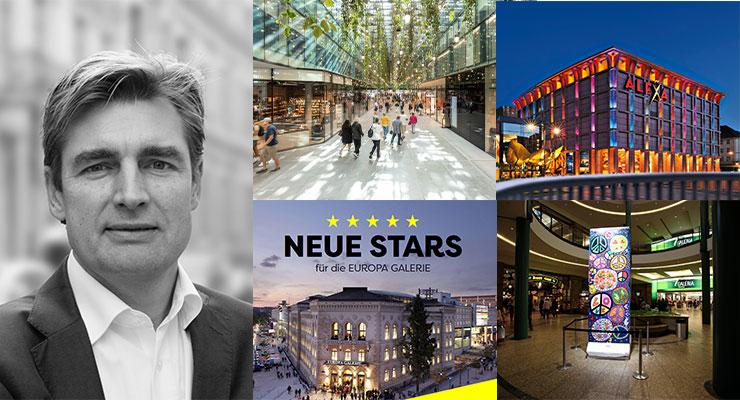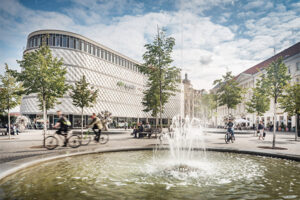ACROSS: 21Media is one of the few marketing agencies that exclusively specializes in shopping destinations. How did you break into the industry?
Sebastian Guth: After studying economics, I landed my first job in the marketing department of the Centro Oberhausen project development company, about 9 month before opening. Three years later, I joined one of the agencies that was responsible for looking after Centro at that time. I honed my skills there for four years, and in 2002, I jumped at the opportunity to found 21Media, taking Centro with me as our first client. Our primary focus was on Centro Oberhausen in the early years.
ACROSS: The opening of Centro Oberhausen in 1996 was a milestone for the shopping center industry. What made it so special from a marketing perspective?
Guth: The sheer variety of issues and the scale of the tasks at hand – wether it came to working with major cooperation partners, such as Coca Cola, staging major events, or exploiting the potential of the moving image. For example, right from day 1 we ran a fully digitalized television studio, producing a new presenter led entertainment program every week that was aired on a huge video wall in the Centro food court. Storytelling was the major theme, because every week, we tried to tell the customers the content of Centro and its tenants from a new and exciting angle. It’s research about what’s going on what is in trend, combining facts and entertainment to create an exciting picture of the Center and how it wants to be positioned. Years later I realized that proved to be valuable and significant training, because I believe in it’s core. This art of storytelling is the essence of destination marketing and branding.
ACROSS: What sets you apart as an agency specializing in retail real estate?
Guth: First of all, the agency is specialized in the same way that other agencies focus on consumer goods, for example. Besides creative minds, the determining factor as to whether or not an agency with such a focus is successful in the market is whether it understands both the individual location of a retail property and the general laws and special features of the sector. Cooperation with a wide variety of stakeholders is particularly beneficial. We are responsible for creating the umbrella brand of a shopping center. That’s our job. The center itself serves as a platform for its tenants. So two things are crucial: the B2B area, that is, communication with potential tenants, and the incorporation of content from the tenant community into the marketing plan. Those are the challenges and expectations faced by an agency.
ACROSS: What role should modern location marketing play for a retail property?
Guth: The role of marketing has remained the same, or at least since I started working in 1996, although its importance has grown. We have two types of customers: potential tenants (B2B) on the one hand, and consumers (B2C) on the other. In the B2B area, our services provide leasing support to the sales department. The aim there is to present the center as a brand, attract tenants, and incorporate their brands into the marketing presence. The other area involves communicating with end customers on a daily basis and increasing footfall using appropriate campaigns. A real brand is created when we optimally combine both areas of responsibility. In essence: we change names into places, places into destinations, and destinations into brands.
ACROSS: Why has its importance increased so markedly in recent years?
Guth: There is considerably more competition these days. The number of centers has increased over the past two decades. Technology has also played a significant role, and E-commerce has become a further key catalyst. On the one hand, all of that has impacted competition as well as the expectations of end customers, not to mention our ability to address them. On the other hand, we are currently operating in a tenant market, so we simply have to make more of an effort to attract tenants. The role of marketing has become increasingly important.
ACROSS: One criticism that has been voiced by customers concerns the uniformity of the tenant mix. How does center positioning work if the tenants are frequently quite similar?
Guth: Positioning in the classic sense refers to differentiation from the competition. It’s not about a center positioning itself in the wide world of shopping centers, but about adapting to its catchment area. In terms of individual positioning, the most important thing to understand is that positioning is not static, but always dynamic, and must be successfully played out on a daily basis. That is hard work, especially when centers seem similar, but I personally think that over time a shopping place can become a local, regional, national, or even international brand.
ACROSS: What do you mean by that?
Guth: Working out the special features of a given location, be it accessibility, individual special tenants, an above-average regional offering, F&B, etc., is essential. After that, one question remains: Why should people and retail brands choose me? Once again, a distinction needs to be made between B2B and B2C. It’s all about target group-specific storytelling. That’s the essence of positioning: We have to keep an eye on what is happening in the catchment area as well as with our competitors every day; we then have to play up our USPs accordingly and communicate them in a target group-specific way.
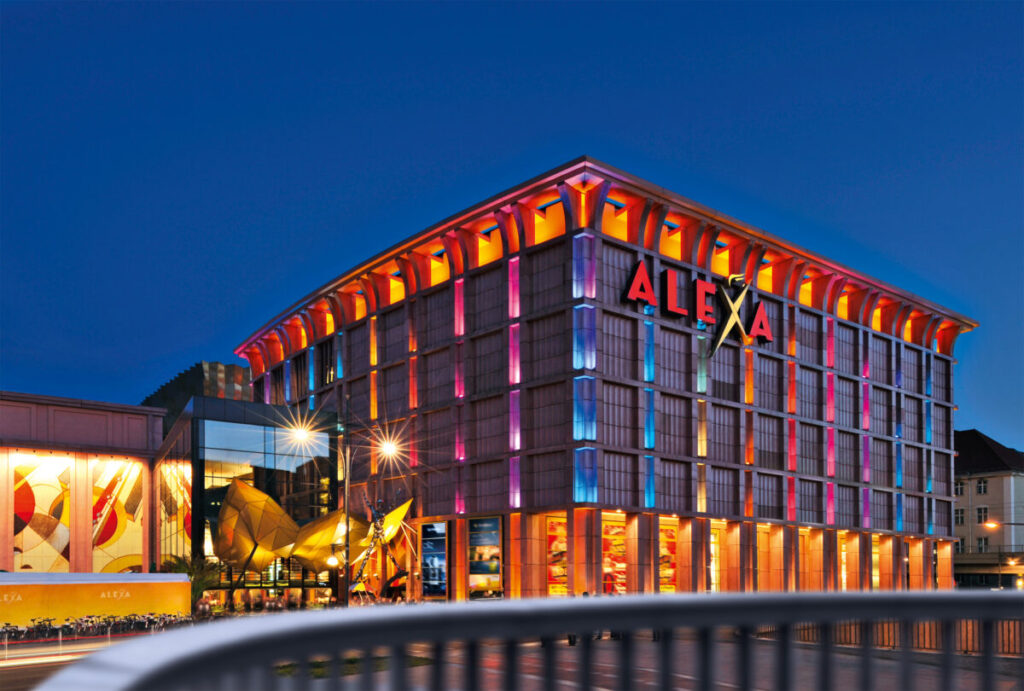
Alexa, Berlin – A Balance between International Appeal and a Large Local Catchment Area: “Alexa, Alexanderplatz Berlin – where else!” is the B2B slogan of Alexa shopping center in Berlin. It was intentionally written in English, as Alexa is one of the most international centers in Germany. Alexanderplatz, along with the Brandenburg Gate, is the most visited tourist site in Berlin. Prior to the COVID-19 pandemic, tourism accounted in certain periods for nearly 50 percent of footfall at Alexa. “Such information is crucial for brands that want to enter the German market; therefore, an international slogan is part of the marketing strategy,” says Guth. The population density around Alexa is also extremely high – a very unique mix within Europe. “Both aspects are equally relevant when it comes to defining Alexa’s unique selling point, and the process of truly defining it cannot be emphasized enough.”
Owned by Union Investment Real Estate; Managed by Sonae Sierra
ACROSS: We regularly receive feedback from retailers that location marketing is more efficient at outlet centers than at shopping centers. You are a mall specialist: Is there any truth to that criticism from a retailer’s point of view?
Guth: Yes, I understand the point that’s being made. However, a certain degree of background information is vital. An outlet, unlike a shopping center, is inherently positioned. The term in itself implies that customers get high-quality brands at low prices. That alone gives them a reason to go to an outlet. The message is clear. The current task at hand is to balance the media mix according to the catchment area. For example: In 2022, we were involved in the opening of the Drei Länder Galerie in Weil am Rhein, where Germany, Switzerland, and France meet. When it came to marketing on the Swiss side, we presented an outlet scenario, because the brands that the Swiss buy in Germany are simply cheaper. The message that we conveyed in Switzerland was more straightforward and quite clear: We drew attention to the brands and Germany as a location. The challenge we faced in that case was finding the right media mix in an expanded catchment area. I’m not saying that outlets generally have it easier, but in terms of positioning, they have a clear initial advantage.
ACROSS: How is efficiency measured in the area of location marketing?
Guth: The hard currency on the B2B side is occupancy rate; on the B2C side, it’s customer footfall. However, in the aftermath of the coronavirus, other KPIs have also become more prominent. We have seen total sales return to pre-pandemic levels much faster than footfall at many locations. In addition to footfall, key figures include “total sales” and “sales by segment” as well as digital conversion rates, for example, from social media.
Examples of outstanding campaigns:
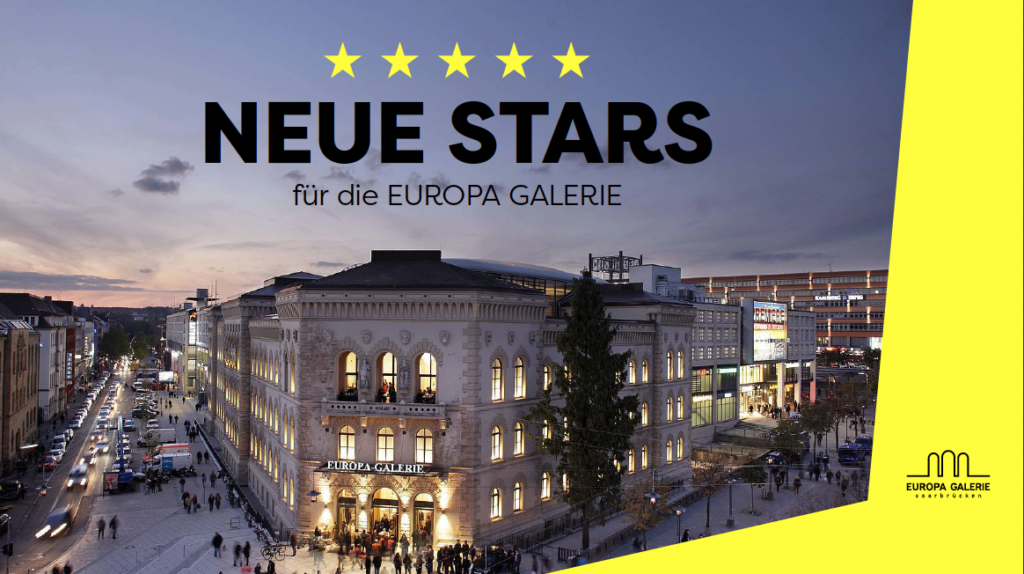
A recent one: EUROPA-Galerie Saarbrücken – B2B
EUROPA-Galerie Saarbrücken recently announced the extension of the Bershka store and the acquisition of the new tenant Pull & Bear. To raise awareness, 21Media also used a LinkedIn B2B campaign that was inspired by transfer news from the world of soccer. The launch was the announcement of two important transfers from Spain and that created a suspenseful arc that ultimately culminated in the naming of the fashion brands – also stating more to come. Why shouldn´t B2B campaigns be entertaining as well?
Owned by Union Investment Real Estate; Managed by Sonae Sierra
The all time favorite: Centro Oberhausen Goes Rizzi – B2C:
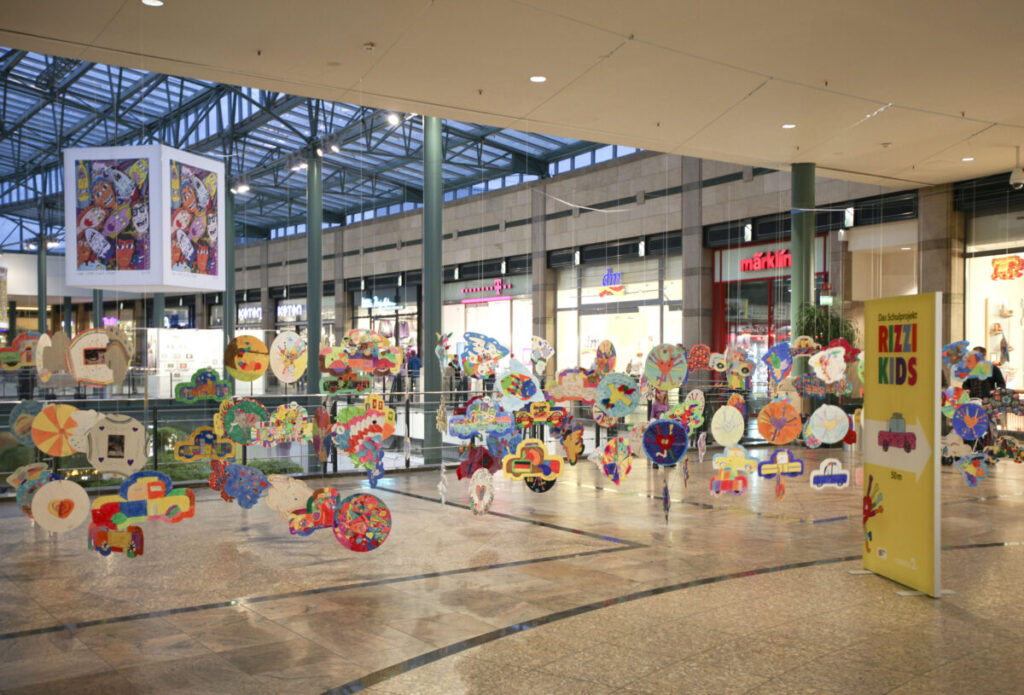
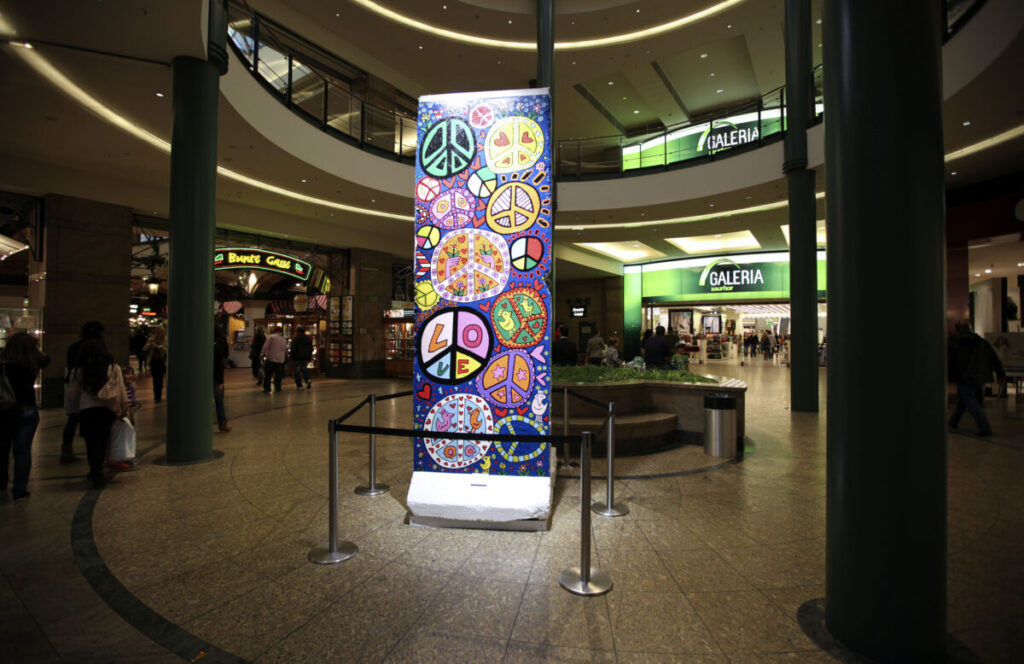
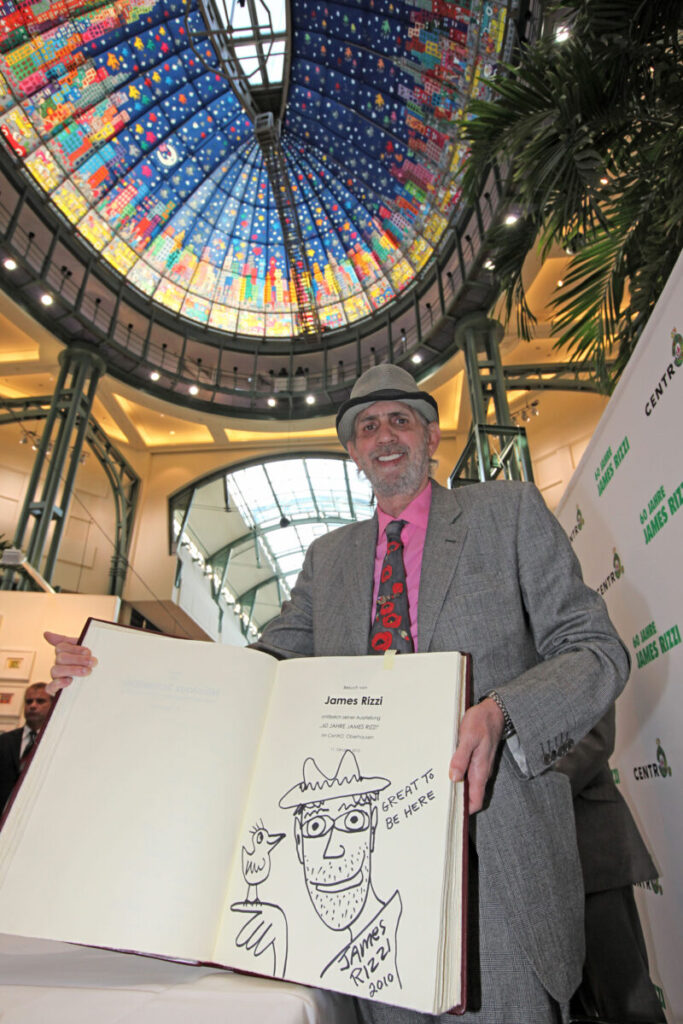
On the occasion of the 60th birthday of pop artist James Rizzi and the celebration of the Ruhr area as a cultural capital, a special exhibition took place at Centro Oberhausen in the fall of 2010: A huge, colourful work of art covering 500 sq m illuminated the glass dome of the shopping center’s central dome. Rizzi’s work could also be found on large cubes, cylinders, pyramids, cars, and airplanes. Interaction with children and young people, in addition to the exhibition, was important to the New York artist. School classes visited the Centro to marvel at the works of art, and the students were able to become artistically engaged themselves. A specially developed app guided visitors through the exhibition, artworks were sold for charity, and the artist was connected live via Skype on a giant videowall for the opening press conference of the exhibition – which was quite innovative for 2010. “The Centro “Oberhausen goes Rizzi” campaign proved that good timing is essential for good marketing,” says Guth. “The coincidence of Rizzi’s birthday and the celebration of the Capital of Culture offered every opportunity for a successful campaign – one that subsequently won international awards.”
ACROSS: In the B2C sector, in particular, a large number of communication channels have been added in recent years. What opportunities and challenges exist in that respect?
Guth: The appealing thing about social media is that it provides us with an interactive channel through which we can communicate directly. At the same time, weighing how much of our budget should be allocated to which channel has become more complex. In addition, the pace of things has increased, which always brings me back to the fact that we should never think or act in a fixed way. Instagrammable content is rarely created for eternity. Customers have become more demanding due to increased competition. On Tik Tok for example you need to get your potential customer within the first 1,5 seconds
ACROSS: What does that change mean for events, which have always played an important role in the marketing mix of shopping centers?
Guth: We used to do a fashion show in the spring and a fashion show in the fall. Nowadays, a fashion show might be a micro influencer campaign. In addition, events are no longer clearly defined. At Fünf Höfe, for example, we work in cooperation with the Munich Film Festival. We created an exhibition featuring stars who have been photographed over the last 10 years, which wound up having the air of an event. Maybe we can say its more about ongoing entertainment then the classical birthday event or fashion show.
ACROSS: Has cooperation with large partners that explore transnational themes and plan events become more important as a result?
Guth: One of the most striking examples of that fact was the rebranding of Centro Oberhausen as Westfield Centro, which was celebrated in 2021 with the broadcast of a Lady Gaga concert. A single mall simply cannot secure a contract with Lady Gaga. The same is true for leasing marketing. When Westfield acts as a group, more opportunities arise on the brand side.
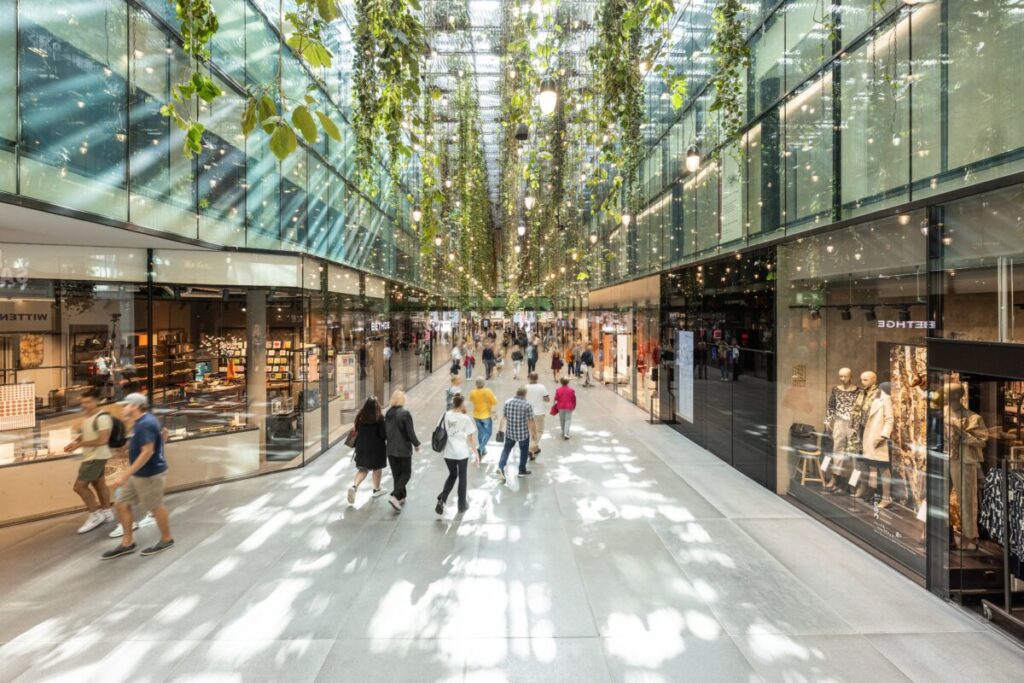
Fünf Höfe, Munich – Uniqueness As a Unique Selling Point in the Tenant Mix: The evaluation of Fünf Höfe’s unique selling point revealed that 40 of the 60 premium brands represented at Fünf Höfe had no other stores in Munich.
Owned by Union Investment Real Estate; Managed by B&L Property Management
ACROSS: Does that mean that size alone is the decisive factor?
Guth: No, it’s the quality that counts. At “Fünf Höfe” in Munich, as I mentioned before, we work in cooperation with the film festival, as well as with the opera, for example. Such collaborations take place on several levels and are very different in terms of content. Cooperation efforts are strongly geared towards “community marketing”, and regionality plays at least as big a role as size. As previously stated: Competition is fierce, and budgets do not always increase in proportion. If you want to network within a community, you have to define exactly who your potential cooperation partners are and how they can be mutually beneficial. Properly designed regional cooperations, in particular, keep budgets on track.
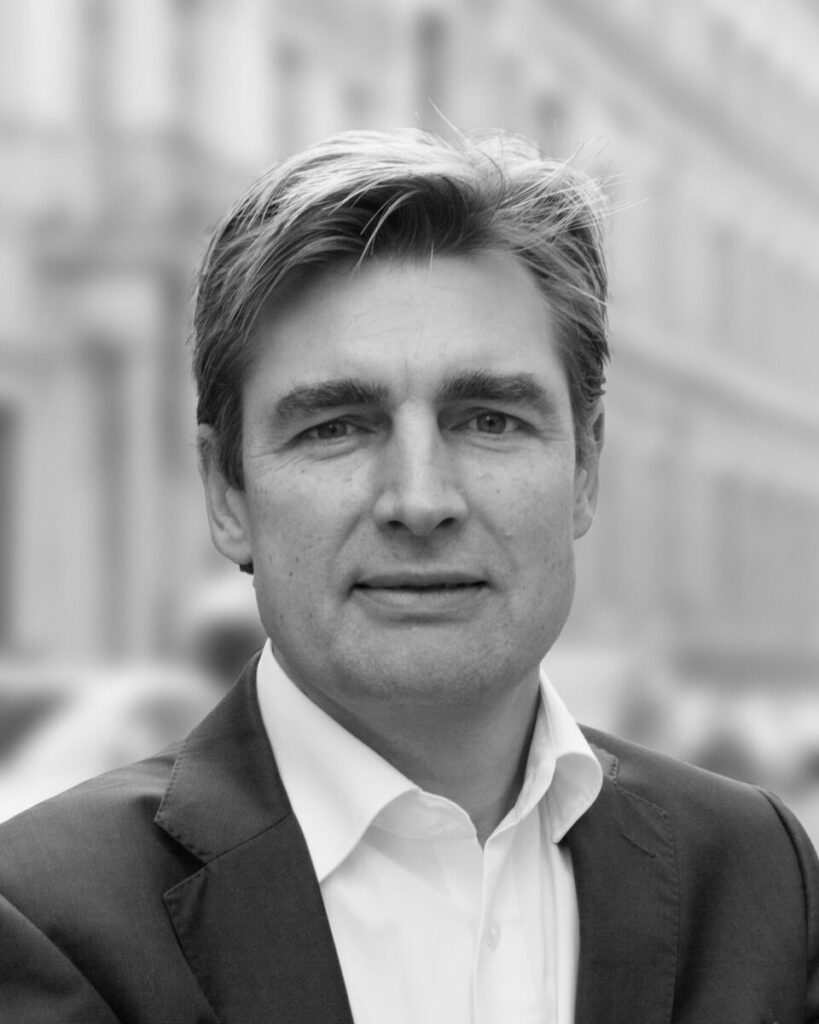
Sebastian Guth is the Managing Director of 21Media, a marketing agency that specializes in shopping destinations. The company was founded in Oberhausen (Germany) and boasts approximately 30 years of experience – from positioning, campaign conception, and implementation to providing support to owners and operators in the marketing of their properties and the development of their brands. In its early years, the agency was primarily responsible for Centro Oberhausen and was swiftly commissioned by Projekt Waterfront Bremen and mfi Management für Immobilien GmbH, now Unibail-Rodamco-Westfield Germany. Clients such as Sonae Sierra, Union Investment, and Deka followed thereafter. Today, 21Media employs 20 people at four locations. In Hamburg, the company is the lead agency for QUARREE Wandsbek. In Berlin, it is the lead agency for Alexa am Alexanderplatz. while in Oberhausen, it provides support to Westfield Centro, and in Munich, it is the lead agency for the Fünf Höfe neighborhood development.
